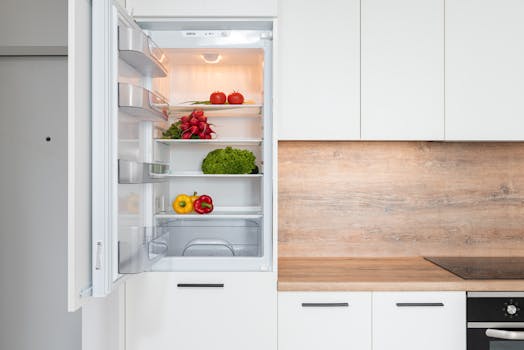
With food safety being a paramount concern, one question that frequently arises is whether 45 degrees Fahrenheit (7.2 degrees Celsius) is a safe temperature setting for a refrigerator.
In this comprehensive article, we will delve into the science behind refrigeration temperatures, the risks associated with improper temperature settings, and the guidelines provided by food safety authorities.
Food safety is a nuanced subject that encompasses a range of practices, from the proper handling and preparation of food to the precise calibration of storage temperatures. The temperature inside your refrigerator is a crucial aspect of food safety, as it directly influences the rate at which bacteria and other pathogens can grow.
According to the United States Food and Drug Administration (FDA), the recommended refrigerator temperature is at or below 40 degrees Fahrenheit (4 degrees Celsius). This temperature range slows down the growth of bacteria significantly, making it less likely for foodborne illnesses to develop.
At 45 degrees Fahrenheit, a refrigerator is operating in a temperature zone that is higher than the FDA’s recommendation. This creates a hospitable environment for bacteria like Salmonella, E. coli, and Listeria to multiply at a faster rate.
These bacteria can cause foodborne illnesses, which manifest through symptoms such as nausea, vomiting, diarrhea, and abdominal pain. In more severe cases, especially among vulnerable populations like young children, the elderly, and individuals with compromised immune systems, these illnesses can be life-threatening.

To understand why 45 degrees Fahrenheit is not an ideal temperature for your refrigerator, it’s important to grasp the concept of the “danger zone.” The danger zone refers to the temperature range between 40 degrees Fahrenheit and 140 degrees Fahrenheit (4 degrees Celsius and 60 degrees Celsius), within which bacteria grow most rapidly. Keeping your refrigerator below this threshold is key to minimizing the risk of bacterial contamination.
To ensure that your refrigerator maintains a safe temperature, it’s important to:
Aside from safety concerns, the temperature of your refrigerator also affects the quality of your food. Fruits, vegetables, dairy products, and meats all have specific storage requirements to maintain their freshness and nutritional value. A temperature of 45 degrees Fahrenheit may lead to faster spoilage and degradation of food quality.
While the standard recommendation stands firm, there are instances where a refrigerator might temporarily reach 45 degrees Fahrenheit. This can happen during the addition of a large amount of warm food or frequent opening of the door. In such cases, the temperature should be brought back to 40 degrees Fahrenheit or below as quickly as possible to mitigate any risks.
In conclusion, maintaining a refrigerator temperature at or below 40 degrees Fahrenheit is essential for food safety and quality. While 45 degrees Fahrenheit might not seem significantly higher, it falls within the danger zone for bacterial growth and can increase the risk of foodborne illness. Therefore, it is not considered a safe temperature for refrigerator settings. Regular monitoring and maintenance can help keep your food safe and your mind at ease.
